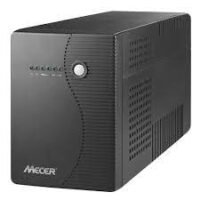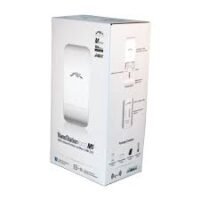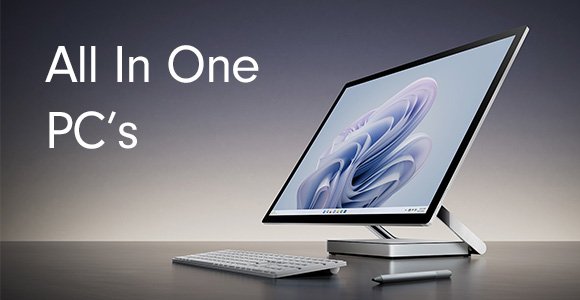-
×
 MECER 2000VA/2KVA Line Interactive UPS ME-2000-VU
1 × KSh28,420.00
MECER 2000VA/2KVA Line Interactive UPS ME-2000-VU
1 × KSh28,420.00 -
×
 Ubiquiti Networks NanoStation locoM5 Indoor/Outdoor airMAX CPE
1 × KSh13,340.00
Ubiquiti Networks NanoStation locoM5 Indoor/Outdoor airMAX CPE
1 × KSh13,340.00
Fiber Optic Patch Cable Single Mode Duplex – 20m-OS2/OS1 LC-LC
Fiber Optic Patch Cable Single Mode Duplex – 20m-OS2/OS1 LC-LC
This fiber optic cable is perfect for connecting two devices with LC ports. It supports data transfer speeds up to 10 Gbps, and it comes with a 20-meter length.
Fiber optic patch cable
A fiber optic patch cable is a type of cable that is used to connect two devices together. Patch cables are used in a variety of applications, including computer networking, audio/visual, and telecommunications.
Fiber optic patch cables are made up of two main components: the core and the cladding. The core is the part of the cable that carries the light signals. The cladding is a layer of material that surrounds the core and helps to keep the light signals from escaping.
Patch cables are available in a variety of different sizes and configurations. The most common type of fiber optic patch cable is the single mode duplex LC-LC cable. This type of cable has two LC (Lucent Connector) connectors on each end. Single mode fiber optic cable is typically used for long distance applications such as telephone and data communications.
Fiber optic patch cables are also available in multimode versions. Multimode fiber optic cable can carry multiple light signals at the same time. This makes it ideal for short distance applications such as computer networking. Multimode fiber optic patch cables are typically available in LC-LC, LC-SC, and SC-SC configurations.
patch cable
A fiber optic patch cable is a short length of cable that is used to connect two devices or components. Patch cables are typically used in computer networks and data centers.
Fiber optic patch cables are made up of a core, a cladding, and a buffer coating. The core is the innermost layer of the cable and is made of glass or plastic. The cladding is a thin layer of material that surrounds the core and reflects light back into the core. The buffer coating is a protective layer that covers the cladding and protects it from damage.
Fiber optic patch cables are available in single-mode and multi-mode versions. Single-mode patch cables have a narrower core than multi-mode patch cables, which allows them to carry more data over longer distances. Multi-mode patch cables have a wider core and are typically used for shorter distances.
Patch cables are available in various lengths, depending on the needs of the application. Fiber optic patch cables are typically terminated with LC or SC connectors. LC connectors are smaller than SC connectors and provide better space saving in high-density applications.
Ethernet
Ethernet is a popular networking standard that is used in many homes and businesses. Ethernet uses cables to connect computers and other devices to each other. Fiber optic patch cables are a type of Ethernet cable that uses optical fibers instead of copper wires.
Fiber optic patch cables are more expensive than traditional Ethernet cables, but they offer several advantages. For example, fiber optic cables are much thinner than copper wires, so they take up less space. They also have a higher bandwidth, which means they can carry more data than copper wires. Additionally, fiber optic cables are less likely to be affected by electromagnetic interference (EMI).
If you are looking for a high-quality Ethernet cable, fiber optic patch cables are a great option. They offer superior performance and reliability compared to traditional Ethernet cables.
What is a Fiber Optic Patch Cable?
A fiber optic patch cable is a type of cable that is used to connect two devices together using optical fibers. Patch cables are typically used in short-distance applications such as connecting a computer to a printer or connecting a camera to a monitor.
Fiber optic patch cables are available in both single mode and duplex versions. Single mode patch cables have a single optical fiber that carries the signal, while duplex patch cables have two optical fibers (one for transmitting and one for receiving). Duplex patch cables are typically used in longer-distance applications.
Patch cables are available in various lengths, depending on the application. They are also available with different connectors, such as LC (Lucent Connector), ST (Straight Tip), or SC (Subscriber Connector).
Overall, fiber optic patch cables are a type of cable that is used to connect two devices together using optical fibers. They are available in both single mode and duplex versions, and they come in various lengths and with different types of connectors.
The Different Types of Fiber Optic Patch Cables
There are two main types of fiber optic patch cables: single mode and multimode. Single mode cables are designed for use with laser-based equipment, while multimode cables are designed for use with LED-based equipment.
Single mode cables have a small core diameter, which allows them to carry a signal over long distances with minimal attenuation. Multimode cables have a larger core diameter, which allows them to carry a signal over shorter distances with less attenuation.
Fiber optic patch cables are available in a variety of lengths and connector types. The most common lengths are 2 meters (6.5 feet) and 3 meters (9.8 feet). The most common connector types are LC, ST, and FC. LC connectors are the most popular type of connector, as they offer a low insertion loss and high return loss. ST connectors are also popular, as they offer a good combination of low insertion loss and high return loss. FC connectors are less popular, as they have a higher insertion loss but offer a lower return loss.
Pros and Cons of Fiber Optic Patch Cables
Fiber optic patch cables are used to connect two devices together using fiber optic cable. There are some pros and cons to using these types of cables.
One of the main pros of fiber optic patch cables is that they offer very high speeds. They can handle data transfer rates of up to 10 Gbps, which is much faster than most other types of cable. Fiber optic patch cables are also very thin and flexible, making them easy to work with.
There are some cons to using fiber optic patch cables as well. One of the biggest drawbacks is that they are more expensive than other types of cable. They also require specialized equipment for installation, which can add to the cost. Additionally, fiber optic patch cables are not as widely available as other types of cable, so you may have trouble finding them in stores.
How to Install a Fiber Optic Patch Cable
Installing a fiber optic patch cable is a relatively simple process. First, you will need to determine the length of cable you need. Once you have the correct length, strip away about 1 cm of the jacketing from each end of the cable. Next, you will need to carefully cleave the fiber at a 90-degree angle. After that, you will need to insert the fiber into the connectors and tighten the screws. Finally, you will need to test the connection to make sure it is working properly.
Conclusion
This Fiber Optic Patch Cable Single Mode Duplex – 20m-OS2/OS1 LC-LC is a great choice for anyone in need of a reliable, high quality fiber optic cable. It is perfect for use with Ethernet, Fast Ethernet, and Gigabit Ethernet applications. With its LC connectors and duplex configuration, this cable is sure to provide you with the speed and performance you need.


 MECER 2000VA/2KVA Line Interactive UPS ME-2000-VU
MECER 2000VA/2KVA Line Interactive UPS ME-2000-VU  Ubiquiti Networks NanoStation locoM5 Indoor/Outdoor airMAX CPE
Ubiquiti Networks NanoStation locoM5 Indoor/Outdoor airMAX CPE 












